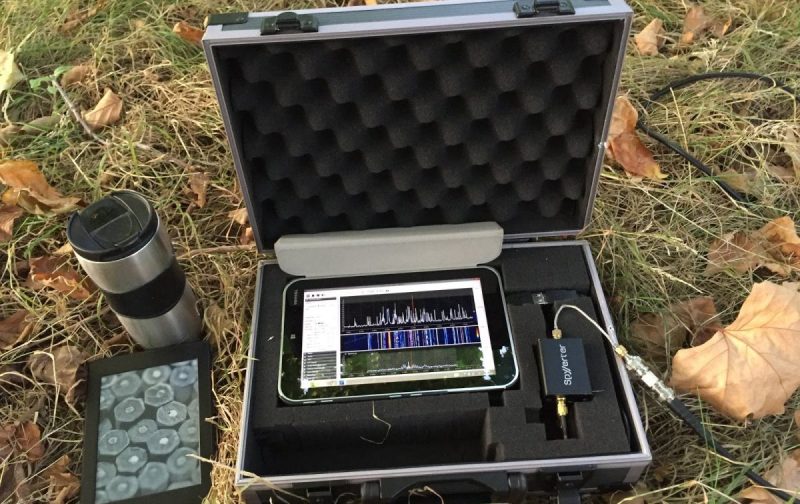Shortwave listening has always been a mainly nocturnal hobby. To get the real DX, one had to wait for favorable ionospheric conditions after sunset and spend hours twisting knobs while straining to pick voices from half a planet away out of the noise. But who has time for that in today’s world? And what of the poor city-dwelling SWL, with antenna limitations and often elevated noise floor in the urban jungle?
[London Shortwave] came up with a solution to both problems – a briefcase SDR capture rig. With a wide-band SDR receiver and an HF up-converter, a Windows tablet, a 12-meter dipole antenna, and a few bits and bobs, [London Shortwave] can now nip to the low-noise environment of the local park and capture large swaths of spectrum to an SD card. The recordings can be played back and analyzed later. [London Sortwave] has been able to dig some interesting signals out of the SDRSharp waterfall display, like Radio New Zealand, a Philipines station, and an early morning transatlantic contact with Radio Aparecida from Brazil. We really like to look and feel of [London Shortwave]’s capture rig too. It bears little resemblance to the Hallicrafters and Drake SW rigs of yore, but it puts a new spin on old hobby and offers possibilities the old timers could only dream of.
SDR is the key to this build, so if you need to get up to speed, check out our SDR primer. And if 10 MHz of bandwidth isn’t enough for your capture rig, take at look at this whopping 56-MHz SDR designed and built by a 16-year old.















Sometimes you come across an article full of acronyms you may not yet be familiar with.
After the first paragraph I had to pause to ponder the RF troubles of a poor, city-dwelling single white lesbian….
So sad.
You’re right. That is very sad…
Have you considered seeking psychiatric help?
Yes, but the LOLcats distract me and I end up feeling better without it.
Being a paranoid anarchist, I thought of the following application. Listed under “Modern Techniques” subhead for the “Dead Drop Wikipedia entry. Except this could store distant messages not from a Jedi, nor a Wifi.
“Modern techniques
See also: Short-range agent communications
On January 23, 2006, the Russian FSB accused Britain of using wireless dead drops concealed inside hollowed-out rocks to collect espionage information from agents in Russia. According to the Russian authorities, the agent delivering information would approach the rock and transmit data wirelessly into it from a hand-held device, and later his British handlers would pick up the stored data by similar means.[2]”
That sounds more like the sort of over engineered silliness you might expect from a certain American agency.
The classic example – which may or may not be true – is the fake Moscow id cards which were made ‘in house’ to the highest possible standard they could achieve. And which stood out like a sore thumb because, amongst other things, the staples didn’t rust…
Band. Ham Band.